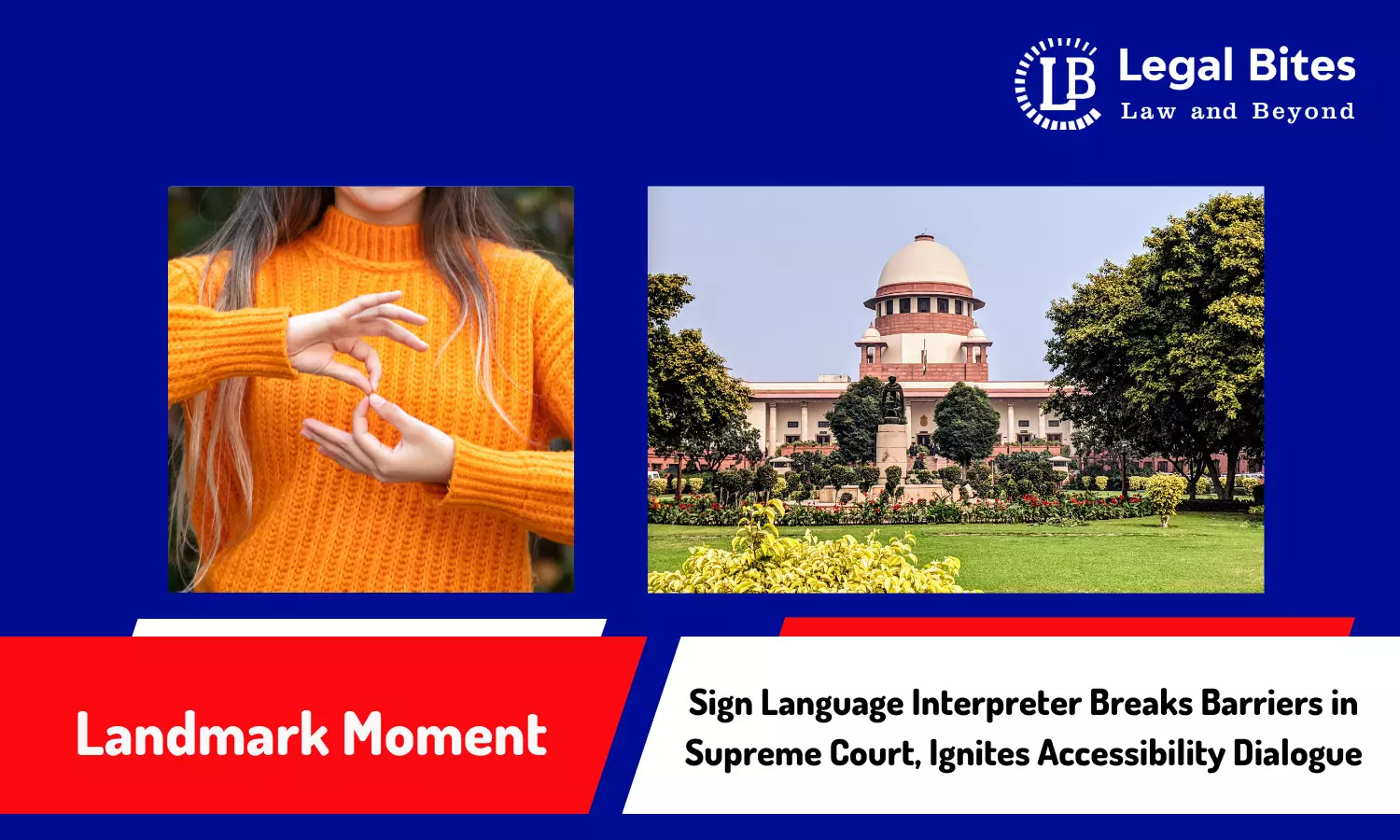Landmark Moment: Sign Language Interpreter Breaks Barriers in Supreme Court, Ignites Accessibility Dialogue
On 22nd September, the Supreme Court of India created legal history by introducing a sign language interpreter into its virtual proceedings.

On 22nd September, the Supreme Court of India created legal history by introducing a sign language interpreter into its virtual proceedings. This was an unprecedented step aimed at ensuring that a deaf lawyer could fully participate in the legal process.
Advocate on Record Sanchita Ain arranged for the presence of Saurav Roychowdhury, a skilled interpreter in Indian Sign Language (ISL), with the primary objective of enabling the active participation of her deaf colleague, Advocate Sarah Sunny, in the court proceedings. This event represented a crucial moment in the country's legal progress, signifying a significant stride towards promoting "inclusivity" within the Court.
Landmark Moment: Sign Language Interpreter Breaks Barriers in Supreme Court, Ignites Accessibility Dialogue
At the outset, the moderator of the virtual court hearing had reservations and believed that the interpreter shouldn't keep their video on for the entire court session. However, Chief Justice DY Chandrachud held a different perspective and permitted the interpreter to do so. It's important to highlight that Chief Justice Chandrachud's commitment to ensuring equal access to justice is not recent. Just last year, he advocated for a comprehensive audit of the Supreme Court premises focused on accessibility. The objective was clear, to enhance the accessibility of the justice system and gain insights into the challenges faced by individuals with disabilities when interacting with the Supreme Court of India.
The unexpected appearance of the interpreter sparked genuine curiosity among all those present and earned accolades for the proficient and remarkable job performed.
"The speed at which the interpreter is interpreting in sign language is amazing", SG Tushar Mehta said while applauding him.
This momentous occasion had far-reaching implications. It brought the issue of accessibility and inclusivity within the legal system to the forefront of public consciousness. It underscored the necessity of accommodating diverse needs within the legal process and prompted a collective reflection on the barriers that individuals with disabilities face in accessing justice. Advocates and activists hailed this event as a step in the right direction.
This event set a legal precedent. It demonstrated that the courts should and can accommodate the needs of individuals with disabilities, particularly those with hearing impairments. It emphasised that equal access to justice is not negotiable.
The presence of a sign language interpreter in the hallowed halls of the Supreme Court marked a pivotal moment in the ongoing struggle for inclusivity and accessibility. It served as a beacon of hope for a more inclusive legal system, one where the rights and voices of individuals with disabilities are not only recognized but celebrated. This event will undoubtedly leave an indelible mark on the path towards a more equitable and accessible society.

